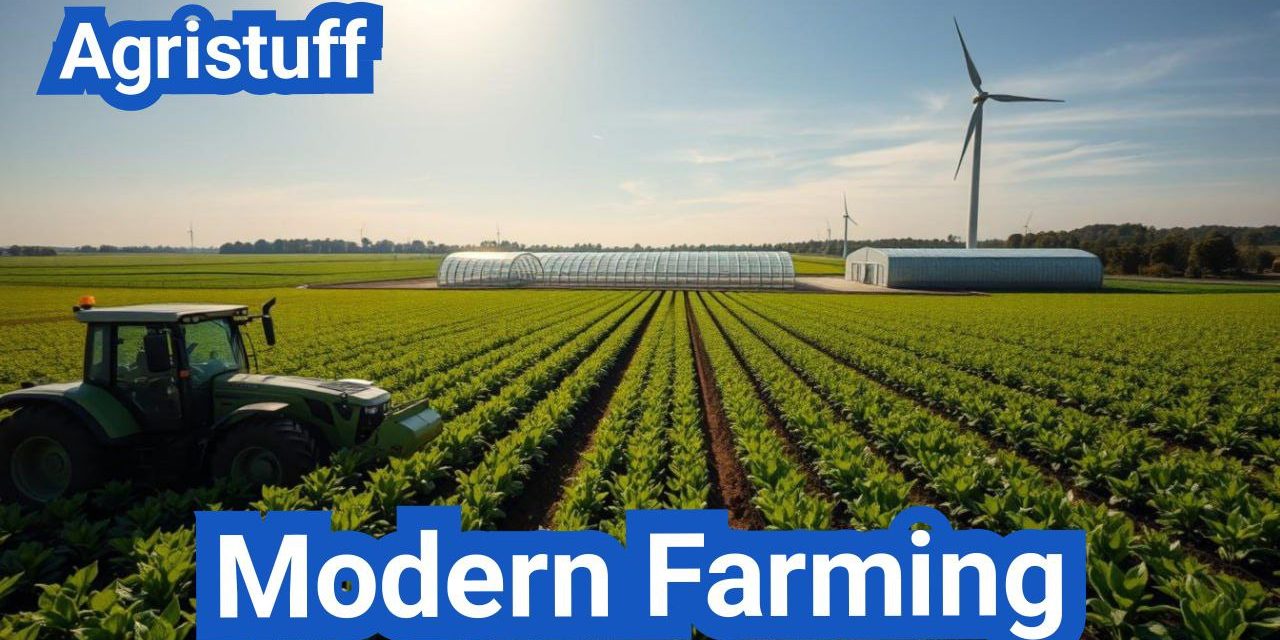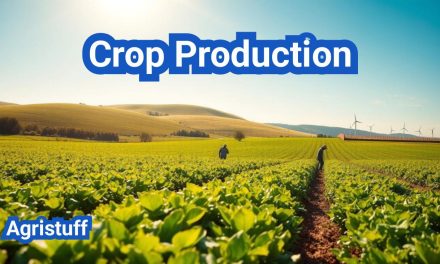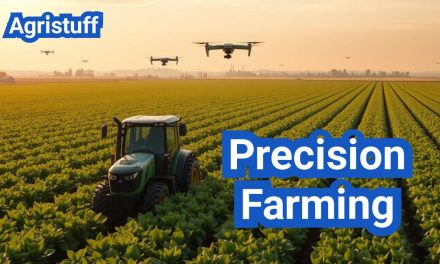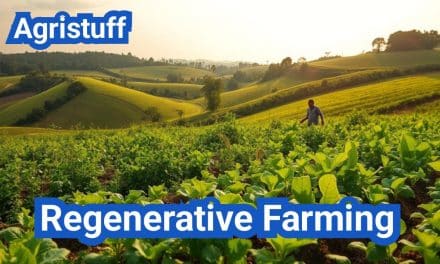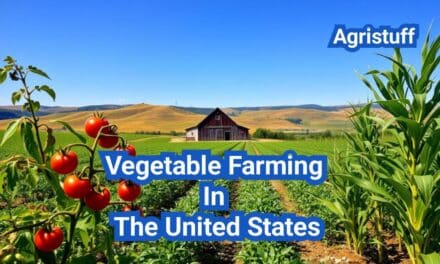The agricultural landscape is undergoing a significant transformation with the advent of modern agriculture and farming techniques. These innovative methods are revolutionizing traditional practices, making them more efficient and sustainable.
By integrating advanced agricultural innovation, farmers can enhance productivity while minimizing environmental impact. This shift towards sustainable farming practices is crucial in meeting the world’s growing food demands.
Key Takeaways
- Modern agriculture integrates advanced technology for efficiency.
- Sustainable farming practices minimize environmental impact.
- Agricultural innovation enhances productivity.
- Modern farming methods are revolutionizing traditional practices.
- Efficient farming techniques are crucial for meeting global food demands.
The Evolution of Agricultural Practices
The agricultural landscape has undergone significant transformations over the years, driven by the need for increased productivity and sustainability. As the global population continues to grow, the demand for food production has intensified, pushing the agricultural sector towards more efficient and innovative practices.
From Traditional to Modern Farming
Traditional farming methods, characterized by manual labor and simple tools, have gradually given way to more modern and mechanized techniques. The introduction of precision agriculture has been a significant factor in this transition, enabling farmers to optimize crop yields and reduce waste through the use of advanced technology and data analysis.
The shift towards modern farming has also been driven by the need to address environmental concerns. Practices such as conservation agriculture and integrated farming systems have become increasingly popular, as they promote soil health, biodiversity, and efficient water use.
Key Drivers of Agricultural Innovation
Several factors have driven the innovation in agricultural practices. Technological advancements, including the development of farm automation and precision farming equipment, have played a crucial role. Additionally, changing consumer demands for sustainable and environmentally friendly products have pushed the industry towards more modern and efficient farming methods.
“The future of agriculture lies in its ability to adapt and innovate, leveraging technology to ensure sustainability and productivity.” –
Agricultural Expert
The key drivers of agricultural innovation can be summarized in the following table:
| Driver | Description | Impact |
|---|---|---|
| Technological Advancements | Introduction of precision agriculture, farm automation, and advanced equipment | Increased efficiency and productivity |
| Changing Consumer Demands | Demand for sustainable and environmentally friendly products | Shift towards modern and sustainable farming practices |
| Environmental Concerns | Need to reduce environmental impact | Adoption of conservation agriculture and integrated farming systems |
What is Modern Farming?

Modern farming is characterized by its reliance on advanced technology and innovative practices to improve crop yields and reduce environmental impact. This approach to agriculture has transformed the way food is produced, making it more efficient and sustainable.
Defining Characteristics of Modern Agriculture
Modern agriculture is distinguished by several key characteristics, including the use of precision farming techniques, advanced irrigation systems, and the integration of technology such as drones and automated machinery. These innovations enable farmers to make data-driven decisions, optimize resource allocation, and minimize waste.
Precision agriculture is a hallmark of modern farming, involving the use of GPS, sensors, and data analytics to tailor farming practices to specific soil and crop conditions. This approach not only enhances productivity but also reduces the environmental footprint of farming operations.
Economic and Environmental Benefits
The economic benefits of modern farming are substantial, including increased crop yields, reduced labor costs, and improved resource allocation. By adopting precision agriculture techniques and leveraging technology, farmers can significantly boost their profitability.
From an environmental perspective, modern farming practices contribute to sustainable agriculture by minimizing waste, conserving water, and reducing the use of chemical inputs. This not only helps in preserving natural resources but also mitigates the impact of farming on the environment.
| Economic Benefits | Environmental Benefits |
|---|---|
| Increased crop yields | Reduced water consumption |
| Reduced labor costs | Minimized chemical use |
| Improved resource allocation | Lower environmental impact |
The Role of Technology in Transforming Agriculture
Technology plays a pivotal role in modern farming, driving innovation and efficiency. The use of modern farming technology, such as IoT devices, drones, and AI-powered analytics, has revolutionized agricultural practices.
Drones, for instance, are used for crop monitoring, soil analysis, and planting, while AI and machine learning algorithms help in predicting crop yields, detecting pests, and optimizing farming schedules. These technological advancements are transforming the agricultural landscape, making farming more productive and sustainable.
Essential Modern Farming Methods
Modern farming methods have revolutionized the way crops are grown and managed, emphasizing efficiency and environmental stewardship. These methods are crucial for meeting the world’s growing food demands while minimizing the environmental impact of agricultural practices.
Precision Agriculture
Precision agriculture involves the use of advanced technology, such as GPS and sensors, to optimize crop growth and reduce waste. This approach allows farmers to:
- Monitor soil moisture levels and crop health in real-time
- Apply precise amounts of water, fertilizers, and pesticides
- Reduce labor costs and improve crop yields
By adopting precision agriculture, farmers can significantly improve the sustainability and productivity of their farming operations.
Conservation Agriculture
Conservation agriculture focuses on minimizing soil disturbance and promoting soil health through the use of techniques such as:
- No-till or reduced-till farming
- Cover cropping and crop rotation
- Organic amendments and mulching
This approach helps to reduce soil erosion, improve soil fertility, and promote biodiversity.
Integrated Farming Systems
Integrated farming systems involve the integration of different farming practices, such as crop rotation and livestock grazing, to create a more diverse and resilient farming system. This approach can help to:
- Improve soil health and fertility
- Reduce the need for external inputs, such as fertilizers and pesticides
- Promote biodiversity and ecosystem services
Modern Organic Farming Approaches
Modern organic farming approaches involve the use of sustainable practices, such as organic amendments and integrated pest management, to promote soil health and reduce the environmental impact of farming. Some key strategies include:
- Using cover crops and crop rotation to improve soil fertility
- Implementing integrated pest management systems
- Promoting biodiversity through the use of conservation habitats
By adopting these modern farming methods, farmers can improve the sustainability and productivity of their operations, while also contributing to a more environmentally friendly food system.
Modern Farming Technologies Revolutionizing Agriculture

The advent of modern farming technologies is transforming agricultural practices worldwide. These technologies are not only improving crop yields but also reducing waste and promoting sustainability.
IoT and Sensors in Field Monitoring
The Internet of Things (IoT) is playing a crucial role in modern farming. IoT sensors are used to monitor soil moisture, temperature, and other factors that affect crop growth. This data is then used to make informed decisions about irrigation, fertilization, and pest control.
For instance, soil moisture sensors can detect the exact water needs of crops, reducing the risk of over-irrigation and water waste. Temperature sensors can alert farmers to potential frost damage, allowing them to take preventive measures.
Drones and Remote Sensing Applications
Drones equipped with cameras and sensors are being used for crop monitoring, spraying, and other applications. They provide high-resolution images of crops, allowing farmers to identify issues such as pest infestations, nutrient deficiencies, and water stress.
Remote sensing technologies, including satellite imaging, are also being used to monitor crop health and growth. This information can be used to optimize crop management practices and improve yields.
AI and Machine Learning for Farm Management
Artificial intelligence (AI) and machine learning are being used to analyze data from various sources, including IoT sensors, drones, and weather stations. This data is used to predict crop yields, detect potential issues, and optimize farm management practices.
For example, AI-powered systems can analyze weather patterns and soil conditions to predict the optimal time for planting and harvesting. Machine learning algorithms can identify patterns in crop growth and development, enabling farmers to make data-driven decisions.
Blockchain for Agricultural Supply Chain
Blockchain technology is being used to improve transparency and accountability in the agricultural supply chain. It enables the tracking of produce from farm to table, reducing the risk of contamination and improving food safety.
Blockchain can also be used to verify the origin and quality of produce, enabling consumers to make informed purchasing decisions. This can help to promote sustainable and responsible farming practices.
Advanced Modern Farming Equipment and Tools
The integration of sophisticated farming equipment is redefining the future of agriculture. Modern farming equipment, such as smart tractors and automated machinery, is significantly enhancing farm productivity and efficiency.
Smart Tractors and Autonomous Machinery
Smart tractors equipped with GPS and IoT technology are becoming increasingly prevalent in modern farming. These tractors can autonomously navigate fields, optimize planting patterns, and reduce fuel consumption. According to a report, the use of smart tractors can increase crop yields by up to 10% while reducing labor costs.
“The use of autonomous machinery is revolutionizing farming practices by providing farmers with real-time data and insights to make informed decisions,” says a leading agricultural technology expert.
Automated Harvesting Equipment
Automated harvesting equipment is another significant advancement in modern farming. These machines can efficiently harvest crops with minimal human intervention, reducing labor costs and improving crop quality. For instance, automated harvesters equipped with computer vision can detect ripe crops and harvest them with precision.
Precision Planting and Seeding Tools
Precision planting and seeding tools are designed to optimize crop yields by ensuring accurate seed placement and spacing. These tools use advanced technologies such as GPS and sensors to monitor and control the planting process. As a result, farmers can achieve uniform crop emergence and maximize yields.
Irrigation and Water Management Systems
Efficient irrigation and water management systems are crucial for sustainable farming practices. Modern irrigation systems utilize sensors and IoT technology to monitor soil moisture levels and optimize water application. This not only conserves water but also reduces energy consumption and enhances crop health.
In conclusion, the adoption of advanced modern farming equipment and tools is transforming the agricultural landscape. By leveraging these technologies, farmers can improve efficiency, reduce costs, and promote sustainable farming practices.
Data-Driven Agriculture: The Foundation of Smart Farming

Data-driven decision-making is revolutionizing modern farming practices. By leveraging advanced technologies and data analytics, farmers can now make informed decisions that significantly improve efficiency, productivity, and sustainability.
Farm Management Information Systems
Farm Management Information Systems (FMIS) are crucial for modern farming. These systems help farmers manage and analyze data related to their farm operations, including crop yields, soil conditions, and equipment performance. By utilizing FMIS, farmers can streamline their operations, reduce costs, and enhance decision-making.
FMIS can integrate various data sources, such as weather stations, soil sensors, and satellite imagery, to provide a comprehensive view of farm conditions. This integrated approach enables farmers to identify areas of improvement and optimize their farming practices accordingly.
Big Data Analytics for Yield Optimization
Big data analytics plays a vital role in optimizing crop yields. By analyzing large datasets related to weather patterns, soil health, and crop performance, farmers can gain valuable insights into the factors affecting their yields. This information allows them to make data-driven decisions to improve crop management and maximize yields.
Advanced analytics tools can also help farmers predict potential issues, such as pest infestations or nutrient deficiencies, enabling them to take proactive measures to mitigate these risks.
Decision Support Systems for Farmers
Decision Support Systems (DSS) are designed to assist farmers in making informed decisions. These systems use data analytics and modeling techniques to provide recommendations on various aspects of farm management, including planting schedules, irrigation management, and fertilizer application.
By leveraging DSS, farmers can optimize their farming practices, reduce waste, and improve overall efficiency. DSS can also help farmers adapt to changing environmental conditions, such as droughts or floods, by providing timely and relevant advice.
In conclusion, data-driven agriculture is transforming the way farmers operate, making farming more efficient, productive, and sustainable. By adopting farm management information systems, big data analytics, and decision support systems, farmers can make informed decisions that drive success in their farming operations.
Modern Grain Farming Techniques

The application of modern techniques in grain farming is enhancing crop yields and reducing environmental impact. Grain farming, which includes crops like rice, wheat, corn, and soybean, is a crucial part of global food production.
Advanced Rice Farming Methods
Modern rice farming has seen significant advancements with the introduction of techniques such as precision agriculture and alternate wetting and drying (AWD). Precision agriculture involves the use of GPS and IoT technologies to optimize crop management, while AWD helps in reducing water consumption and methane emissions.
Modern Wheat Production Systems
Wheat production has become more efficient with the adoption of conservation agriculture practices. This includes minimum tillage, crop rotation, and the use of cover crops, which help in maintaining soil health and reducing erosion.
Precision Techniques for Corn and Soybean
Corn and soybean farming have benefited from precision planting and seeding tools, as well as advanced irrigation systems. These technologies enable farmers to optimize planting density, reduce waste, and improve water management.
Sustainable Grain Farming Practices
Sustainable practices in grain farming are crucial for long-term productivity and environmental stewardship. Techniques such as crop rotation, organic amendments, and integrated pest management are being adopted to reduce the environmental footprint of grain farming.
| Crop | Modern Technique | Benefit |
|---|---|---|
| Rice | Alternate Wetting and Drying (AWD) | Reduced water consumption and methane emissions |
| Wheat | Conservation Agriculture | Improved soil health and reduced erosion |
| Corn/Soybean | Precision Planting and Seeding | Optimized planting density and reduced waste |
Modern Fruit and Vegetable Farming

Modern fruit and vegetable farming are witnessing a significant transformation with the integration of advanced technologies. This shift is not only improving crop yields but also reducing the environmental impact of farming practices.
High-Tech Fruit Production Systems
The use of high-tech fruit production systems is becoming increasingly prevalent. These systems often incorporate technologies such as precision agriculture, drones, and IoT sensors to monitor and manage orchards more effectively.
For instance, precision agriculture allows farmers to analyze soil conditions, tree health, and moisture levels in real-time. This data-driven approach enables farmers to make informed decisions, optimizing their farming practices and reducing waste.
Innovations in Vegetable Farming
Innovations in vegetable farming are also noteworthy. Techniques such as vertical farming and hydroponics are gaining popularity due to their potential to increase yields while minimizing land use and environmental impact.
Vertical farming, for example, involves growing vegetables in vertically stacked layers, often within indoor environments. This method not only conserves land but also allows for year-round production, regardless of weather conditions.
Hydroponics, on the other hand, involves growing plants in nutrient-rich solutions rather than soil. This technique can significantly reduce water usage and enhance crop growth rates.
Both high-tech fruit production systems and innovations in vegetable farming are crucial for meeting the world’s growing food demands sustainably. As these technologies continue to evolve, we can expect even more efficient and productive farming practices in the future.
Specialized Modern Crop Production Systems

The evolution of agricultural practices has led to the development of sophisticated crop production systems. These advancements have transformed the way farmers cultivate specialized crops, improving yields and reducing environmental impact.
Modern Sugarcane Farming Technologies
Modern sugarcane farming has adopted precision agriculture techniques, including GPS-guided planting and harvesting. This approach enhances efficiency and reduces waste. Precision irrigation systems also play a crucial role in optimizing water usage.
Advanced Cassava Production Methods
Cassava production has seen significant improvements with the introduction of disease-resistant varieties and precision farming techniques. These advancements have increased crop yields and improved food security in regions where cassava is a staple crop.
| Crop | Traditional Yield (tons/ha) | Modern Yield (tons/ha) |
|---|---|---|
| Cassava | 10 | 20 |
| Sugarcane | 50 | 80 |
| Coconut | 5 | 10 |
Innovative Coconut Farming Approaches
Coconut farming has benefited from innovative approaches such as integrated farming systems, where coconut trees are intercropped with other crops. This method enhances biodiversity and increases farm productivity.
Controlled Environment Crop Production
Controlled environment agriculture (CEA) involves growing crops in controlled environments, such as greenhouses or indoor facilities. CEA allows for year-round production, improved crop quality, and reduced water usage.
- Hydroponics and aeroponics are common methods used in CEA.
- These systems enable precise control over nutrient delivery and water usage.
- CEA can significantly reduce the environmental impact of farming.
Implementing a Modern Farming System: Step-by-Step Guide

Adopting modern farming practices is a multifaceted process that begins with a thorough assessment of current farm operations. This initial step is crucial for understanding the existing infrastructure, identifying areas for improvement, and determining the most effective strategies for implementing modern farming techniques.
Assessing Your Current Farm Operations
The first step in implementing a modern farming system is to conduct a comprehensive assessment of your current farm operations. This involves evaluating your existing equipment, infrastructure, and farming practices to identify strengths, weaknesses, opportunities, and threats.
A thorough assessment should include:
- Evaluating the condition and efficiency of your current farming equipment.
- Assessing the productivity of your land and identifying areas for improvement.
- Analyzing your current farming practices and their environmental impact.
By understanding your current operations, you can develop a tailored plan for implementing modern farming practices that address your specific needs and challenges.
Developing a Technology Adoption Plan
Once you have assessed your current farm operations, the next step is to develop a technology adoption plan. This plan should outline the modern farming technologies you intend to implement, such as precision agriculture tools, IoT devices, or automated machinery.
Key considerations when developing your technology adoption plan include:
| Technology | Benefits | Implementation Considerations |
|---|---|---|
| Precision Agriculture | Increased efficiency, improved crop yields | Initial investment, training for farm staff |
| IoT Devices | Real-time monitoring, data-driven decision making | Connectivity requirements, data management |
| Automated Machinery | Reduced labor costs, increased productivity | High upfront costs, maintenance requirements |
Securing Financing and Resources
Implementing modern farming technologies often requires significant investment. Therefore, securing financing and resources is a critical step in the process.
Farmers can explore various financing options, including:
- Grants and subsidies for agricultural innovation.
- Loans and credit facilities from agricultural banks.
- Partnerships with technology providers or investors.
By securing the necessary financing and resources, farmers can ensure a smooth transition to modern farming practices.
Training and Skill Development
The successful implementation of modern farming systems also depends on the skills and knowledge of farm staff. Providing training and skill development opportunities is essential for ensuring that your team can effectively use new technologies and practices.
Training programs should cover:
- Operation and maintenance of new equipment and technologies.
- Data analysis and interpretation for informed decision-making.
- Best practices for modern farming techniques.
By investing in your team’s skills and knowledge, you can maximize the benefits of modern farming practices and achieve long-term success.
Vertical and Urban Farming: The Future of Agriculture

Vertical and urban farming are at the forefront of a new agricultural revolution, offering sustainable and efficient farming practices. These innovative methods are transforming the way we produce food, making it possible to grow crops in urban environments and reducing the environmental impact of traditional farming.
Hydroponic and Aeroponic Systems
Hydroponic and aeroponic systems are key components of vertical farming. These soilless cultivation methods allow for precise control over nutrient delivery, water usage, and climate conditions, resulting in higher yields and reduced resource consumption.
Benefits of Hydroponics and Aeroponics:
- Increased crop yields
- Water conservation
- Reduced land use
- Improved crop quality
Controlled Environment Agriculture
Controlled Environment Agriculture (CEA) involves the use of advanced technologies to control and monitor the growing conditions for crops. This includes temperature control, humidity management, and precision lighting, creating optimal conditions for plant growth.
CEA offers several advantages, including:
- Year-round production
- Improved crop consistency
- Reduced pests and diseases
- Enhanced resource efficiency
Urban Farming Solutions for Food Security
Urban farming plays a crucial role in enhancing food security by providing fresh produce to local communities. By growing crops in urban areas, we can reduce transportation costs, decrease carbon emissions, and increase access to nutritious food.
| Urban Farming Benefits | Description |
|---|---|
| Fresh Produce | Urban farming provides fresh produce to local communities, improving nutritional outcomes. |
| Reduced Transportation | By growing crops locally, transportation costs and carbon emissions are significantly reduced. |
| Increased Food Access | Urban farming enhances food access, particularly in areas with limited grocery store options. |
Commercial Viability and Scaling Challenges
While vertical and urban farming offer numerous benefits, there are challenges to commercial viability and scaling. High initial investment costs, energy consumption, and the need for specialized knowledge are some of the hurdles that need to be addressed.
Key Considerations for Scaling:
- Technological innovation
- Economic viability
- Regulatory frameworks
- Market demand
Overcoming Challenges in Modern Farming

As modern farming continues to evolve, it encounters several obstacles that must be overcome to ensure food security and sustainability. These challenges span economic, technical, and regulatory domains, each requiring tailored solutions to address the unique needs of farmers and agricultural communities.
Economic Barriers and Financial Solutions
One of the significant challenges facing modern farming is economic barriers. The high initial investment required for modern farming technologies and equipment can be prohibitive for many farmers. To address this, various financial solutions have been proposed, including subsidies, grants, and low-interest loans specifically designed for farmers looking to adopt modern farming practices.
For instance, governments and agricultural organizations can offer financial assistance programs that help farmers purchase necessary equipment and technologies. Additionally, innovative financing models such as pay-as-you-go services for farm equipment can reduce the upfront costs, making modern farming more accessible.
| Financial Solution | Description | Benefits |
|---|---|---|
| Subsidies | Direct financial assistance to farmers for adopting modern farming technologies. | Reduces initial investment costs, encourages technology adoption. |
| Grants | Funds provided for specific agricultural projects or research. | Supports innovation, improves farming practices. |
| Low-Interest Loans | Loans with lower interest rates for farmers to invest in modern farming. | Eases financial burden, promotes investment in technology. |
Technical Challenges and Support Systems
Modern farming relies heavily on technology, including precision agriculture, drones, and data analytics. However, the adoption of these technologies can be hindered by technical challenges such as lack of infrastructure, technical expertise, and interoperability issues between different systems.
To overcome these challenges, support systems such as training programs for farmers, technical assistance, and infrastructure development are crucial. Moreover, the development of user-friendly and interoperable technologies can facilitate the adoption of modern farming practices.
Regulatory and Policy Considerations
The regulatory environment plays a significant role in the adoption of modern farming practices. Regulations related to the use of drones, data privacy, and the approval of new technologies can either facilitate or hinder the progress of modern farming.
Policymakers can support modern farming by creating conducive regulatory frameworks that encourage innovation while ensuring safety and environmental protection. This includes streamlining the approval process for new technologies and providing guidelines for their safe use.
Bridging the Digital Divide in Agriculture
The digital divide in agriculture refers to the gap between those who have access to modern agricultural technologies and those who do not. Bridging this divide is essential for ensuring that all farmers can benefit from modern farming practices.
Initiatives to bridge the digital divide include improving rural connectivity, providing digital literacy training for farmers, and making digital tools and platforms more accessible and user-friendly. Additionally, public-private partnerships can play a crucial role in delivering digital solutions to farmers.
By addressing the challenges faced by modern farming through economic support, technical assistance, favorable regulatory policies, and bridging the digital divide, we can ensure a more sustainable and productive agricultural sector.
Finally
Modern farming has revolutionized the way we produce food, making it more efficient, productive, and sustainable. By integrating advanced technologies and innovative techniques, farmers can now optimize crop yields, reduce waste, and promote environmental stewardship.
The adoption of modern farming practices, such as precision agriculture, conservation agriculture, and integrated farming systems, has transformed the agricultural landscape. These approaches not only enhance productivity but also contribute to sustainable agriculture, ensuring a food-secure future.
Agricultural innovation continues to drive progress in the sector, with technologies like IoT, drones, AI, and blockchain being increasingly adopted. As the global population grows, embracing modern farming practices and sustainable agriculture methods will be crucial in meeting the world’s food demands while minimizing environmental impact.
By investing in agricultural innovation and promoting sustainable agriculture, we can create a more resilient food system, supporting a healthier planet for future generations.
FAQ
What is modern farming?
Modern farming refers to the use of advanced technology, equipment, and methods to improve the efficiency, productivity, and sustainability of agricultural practices.
How is technology transforming agriculture?
Technology is transforming agriculture through the use of precision agriculture, IoT sensors, drones, AI, and blockchain, which improve crop yields, reduce waste, and enhance sustainability.
What are the benefits of modern farming methods?
Modern farming methods offer several benefits, including improved crop yields, reduced environmental impact, increased efficiency, and enhanced sustainability.
What is precision agriculture?
Precision agriculture is a farming approach that uses advanced technology, such as GPS, drones, and sensors, to optimize crop yields, reduce waste, and improve resource allocation.
How can farmers implement a modern farming system?
Farmers can implement a modern farming system by assessing their current operations, developing a technology adoption plan, securing financing and resources, and training their staff.
What are the challenges faced by modern farming?
Modern farming faces several challenges, including economic barriers, technical challenges, regulatory considerations, and the need to bridge the digital divide in agriculture.
What is the role of data-driven agriculture in modern farming?
Data-driven agriculture plays a crucial role in modern farming by providing farmers with insights and information to make informed decisions, optimize crop yields, and reduce waste.
What are some examples of modern farming technologies?
Examples of modern farming technologies include smart tractors, automated harvesting equipment, precision planting tools, and irrigation management systems.
How can vertical and urban farming contribute to food security?
Vertical and urban farming can contribute to food security by providing a sustainable and efficient way to produce fresh produce in urban areas, reducing transportation costs, and increasing access to fresh produce.
What is the future of modern agriculture?
The future of modern agriculture is likely to be shaped by continued technological innovation, increasing adoption of sustainable practices, and the need to address the challenges of climate change, population growth, and food security.
What is climate-smart farming?
Climate-smart farming refers to agricultural practices that are designed to mitigate the impacts of climate change, improve the resilience of farming systems, and promote sustainable agriculture.
How can farmers overcome the challenges of modern farming?
Farmers can overcome the challenges of modern farming by accessing financial support, technical assistance, and policy initiatives that promote sustainable agriculture and provide training and skill development opportunities.
Conclusion of: Modern Farming
Modern farming has revolutionized the way we grow crops and raise livestock, using advanced technologies and sustainable practices to increase efficiency and productivity. From drones and sensors to precision agriculture and hydroponics, modern farming plays a vital role in ensuring food security for a growing global population. In this article, we will explore what modern farming entails, its benefits, technologies, challenges, and future trends.
The Meaning of Modern Farming
Modern farming refers to the application of scientific, technological, and innovative methods in agriculture to enhance productivity, reduce environmental impact, and optimize resource use. It encompasses various tools and techniques, such as GPS-guided equipment, data analytics, and genetically modified crops.
External Source: https://www.britannica.com/topic/agriculture
Technologies Used in Modern Farming
Modern farming leverages cutting-edge technologies to streamline operations. These include:
- Precision agriculture: Uses GPS, satellite imagery, and data analytics to optimize field-level management.
- Drones and UAVs: Monitor crop health and soil conditions.
- IoT and sensors: Track soil moisture, weather, and crop growth.
- Automation and robotics: Automate planting, irrigation, and harvesting.
- Vertical farming and hydroponics: Enable farming in urban settings and without soil.
External Source: https://www.nal.usda.gov/legacy/afsic/modern-technologies-agriculture
Benefits of Modern Farming
Modern farming brings numerous benefits:
- Higher yields with fewer resources
- Improved crop quality
- Efficient land and water use
- Reduced environmental footprint
- Better pest and disease management
External Source: https://www.fao.org/3/i8568en/I8568EN.pdf
Challenges in Modern Farming
Despite its advantages, modern farming faces challenges such as:
- High costs of technology adoption
- Limited access in developing regions
- Data privacy concerns
- Environmental sustainability issues
External Source: https://www.worldbank.org/en/topic/agriculture/overview
Sustainable Practices in Modern Farming
Sustainability is integral to modern farming. Farmers adopt practices such as:
- Crop rotation and cover cropping
- Organic fertilizers and biopesticides
- Conservation tillage
- Integrated pest management (IPM)
Role of Data and AI in Modern Farming
Artificial Intelligence (AI) and Big Data are transforming agriculture. They help in:
- Predicting weather patterns
- Optimizing irrigation schedules
- Automating machinery
- Analyzing soil health
Government and Policy Support
Policies and subsidies play a crucial role in promoting modern farming. Governments support:
- Research and development (R&D)
- Smart farming initiatives
- Farmer education programs
- Infrastructure development
External Source: https://www.ers.usda.gov/topics/farm-economy/farm-commodity-policy/
Future of Modern Farming
The future of modern farming is promising. Innovations like gene editing, autonomous tractors, and climate-smart agriculture are reshaping the industry. Farmers are increasingly embracing eco-friendly practices and digital solutions.
External Source: https://www.mckinsey.com/industries/agriculture/our-insights/agriculture-2030
Final Thought
Modern farming is the cornerstone of a sustainable and food-secure future. By integrating science, technology, and eco-conscious practices, it ensures optimal use of resources while meeting the growing demand for food. As technologies evolve and global challenges persist, modern farming will continue to adapt, innovate, and lead agriculture into a new era.

